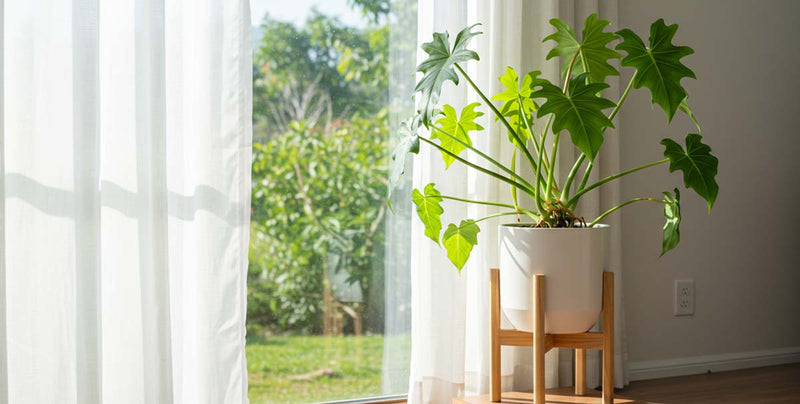DIY Philodendron Soil Mix for Vibrant Growth

Philodendrons have been one of my absolute go-to houseplants for years. They’re beautiful and don’t put up too much of a fight, which makes them perfect for anyone who doesn’t have time to fuss over something every single day. I’ve always found them to be super forgiving, especially during the hectic weeks when I’m juggling work, errands, and trying to keep a house running. Their trailing vines or upright glossy leaves instantly make any shelf or corner feel more alive. But I learned pretty quickly that the secret to seeing them actually thrive, not just survive, comes down to making sure the roots get what they need. And that starts with the right soil mix.
I used to grab any generic store-bought soil and call it a day. But over time, I started to notice issues: soggy roots, droopy leaves, stalled growth. Once I looked into what philodendrons really need from their soil, it totally changed the way I approach caring for them. If you’ve been wondering why yours seems a little off, it might be time to check what they’re growing in. Creating a rich, well-balanced soil mix at home is way easier than it sounds, and it makes all the difference in keeping your philodendron happy and healthy long-term.
Understanding Philodendron Soil Nutrients
Philodendrons don’t ask for much, but they do ask for the right stuff in their soil. And that doesn’t happen with just one bag of dirt. These plants thrive when their soil is packed with a mix of materials that can hold the right amount of water, while letting air reach the roots, too.
Here’s a quick breakdown of key nutrients that help philodendrons stay strong:
- Nitrogen: Keeps the leaves green and growing.
- Phosphorus: Helps with root and flower development (even if yours doesn’t bloom, strong roots matter).
- Potassium: Supports overall health, especially for water flow in the plant.
- Calcium and magnesium: Small but helpful minerals for cell structure and color.
If any of these are low, your plant might look dull, limp, or slow to grow. I’ve had plants that just sat there no matter how well I watered until I discovered their soil wasn’t giving them the nutrients they needed.
One thing I always pay attention to is the balance of organic materials in the mix. It helps feed the philodendron over time, kind of like a slow-release buffet. But too much of one ingredient like peat moss can hold on to water for too long, which brings on root rot. It’s a balance I had to learn through trial and error. Once I started adding the right natural boosters like compost and worm castings, I could see fuller, perkier leaves in just a few weeks.
Basic Components Of A Rich Soil Mix
When I want to build the right soil mix at home for my philodendrons, I focus on four key parts: drainage, retention, nutrition, and airflow. Most of the time, getting the right mix is just combining a few simple ingredients from the garden shop or online.

Here’s what I use and why:
- Organic potting soil: This is the base. I pick something made for indoor plants that doesn't have a ton of fillers.
- Perlite: These lightweight white balls help with drainage so the roots don’t sit too wet.
- Coco coir or peat moss: Helps hold the right amount of moisture without turning into a muddy mess.
- Compost or worm castings: These are great for adding slow-release nutrients for strong growth.
- Orchid bark or pine bark fines (optional): I sometimes throw in a handful to improve airflow and texture.
If you're unsure where to get this stuff, garden centers usually carry most of it, or you can find it online. I also suggest skipping mixes that have synthetic chemicals or too much fertilizer already blended in, especially if you're starting fresh. Your philodendron doesn't need anything too wild, just a blend that acts like the kind of soil it could grow in out in nature: rich, slightly loose, and full of natural goodness.
When I first started mixing my own, I’d do it in a clean bucket or repurpose an old storage bin. I keep my batches small so they stay fresh, and I store them in a dry place with a lid to keep pests and humidity out. That way, when I'm repotting or topping off a plant, I’ve got a ready mix with everything my philodendron needs.

Step-By-Step Guide To Creating Your Own Philodendron Soil Mix
Once I had the right ingredients on hand, making my own philodendron soil mix became part of my regular routine. It’s quick, easy, and way better than grabbing a mystery blend from the shelf. Here’s how I put it together step-by-step.
- Start with 2 parts organic indoor potting soil. This gives the base structure with some nutrition already included.
- Add 1 part perlite. This boosts drainage and improves airflow to the roots.
- Mix in 1 part coco coir or peat moss. This holds just enough moisture between waterings.
- Add ½ part compost or worm castings. These feed the plant slowly and help boost soil life.
- Optional: Sprinkle in a handful of pine bark or orchid bark for even more air movement through the mix.
Once everything’s in the bin, I stir it all up with a trowel or my hands, with gloves if I’m using compost. I aim for a consistency that feels fluffy and crumbly, not too dense or soggy. If it clumps together too much, I add more perlite. If it feels dry and dusty, a little extra coco coir usually helps.
When I make a batch, I store what’s left in a sealed container in a cool, dry area so it stays fresh. If I don’t use it all within a couple of months, I give it a sniff and check for mold or gnats before using again. I also like to remix it briefly before reusing, just to wake it up and evenly redistribute the moisture.
Simple Tips For Keeping Soil Nutrient-Rich
Even the best soil mix can lose steam over time. That’s why I try to check in on my philodendrons every couple of months, especially if they’re showing signs something’s off like yellow leaves or slowed growth.
Here’s what works for me when keeping the soil healthy:
- Water with care. I always check soil moisture with my finger before watering. If the top inch feels dry, it’s time. Keeping it too wet leads to soggy soil and root damage.
- Refresh the top layer. If the soil looks dried out or compacted at the top, I gently scrape off the top inch and replace it with fresh soil or compost.
- Feed during growing months. From spring through early fall, I like to add a balanced houseplant fertilizer every 4 to 6 weeks, depending on how the plant’s doing.
- Rotate the plant gently every week or two. This helps with even growth and makes sure one side isn't doing all the work photosynthesizing.
- Keep an eye under the pot. I lift the pot and check the drainage holes from time to time. If roots are poking out, it might be time to repot.
The biggest mistake I used to make was reusing old soil without checking it first. Over time, nutrients get used up and the soil can even turn hydrophobic, which means it repels water. Now, if a philodendron starts acting fussy and I know everything else is fine, I go straight to the pot and double-check what it’s sitting in.

Your Philodendron's Roots Will Thank You
Once I gave philodendrons the right soil mix, they went from looking okay to looking like they belonged in a plant shop window. The rich mix I use doesn’t just hold them up. It supports new growth, stronger roots, and better resilience when light shifts or watering gets inconsistent.
Keeping the soil healthy is a big part of keeping the plant healthy. Regular checks, simple adjustments, and slow-release feeding changed everything about how my plants perform. If your philodendron seems stuck or unhappy, try starting at the roots and seeing what’s really going on down there.
Making your own soil mix might feel like a small change, but I can’t say enough about how much it's helped me. It tailors the entire growing environment to the plant’s actual needs. Over time, it just becomes one of those tools you rely on to keep everything thriving. If you already love your philodendron, giving it a better home in the soil is one of the best things you can do.
If you want your philodendrons to flourish with vibrant leaves and strong roots, nurturing them with the right nutrients is key. Explore our favorite solutions to boost philodendron soil nutrients at Houseplant Resource Center and give your plants the healthy environment they deserve. With the right care and a little extra attention to their growing medium, your green beauties can thrive like never before.




